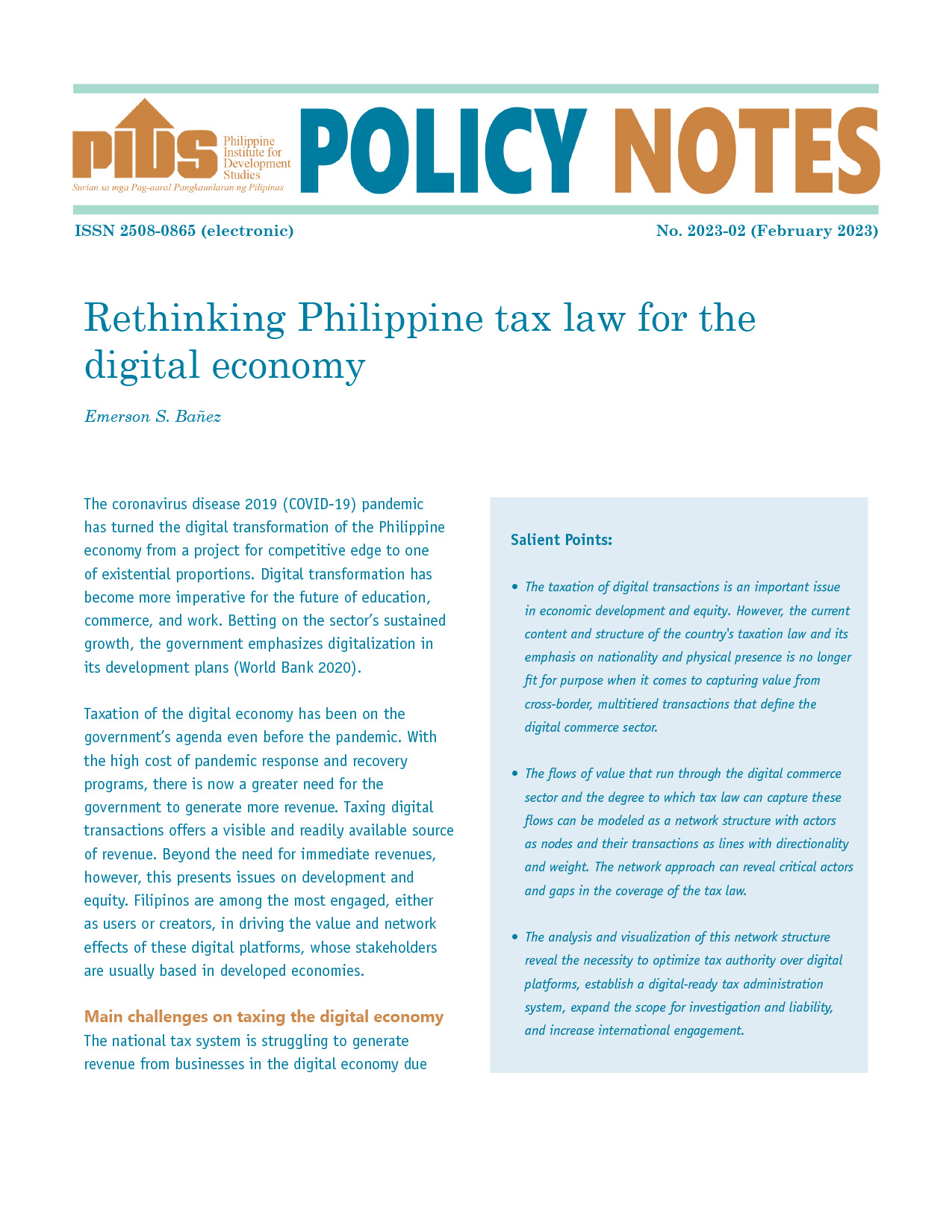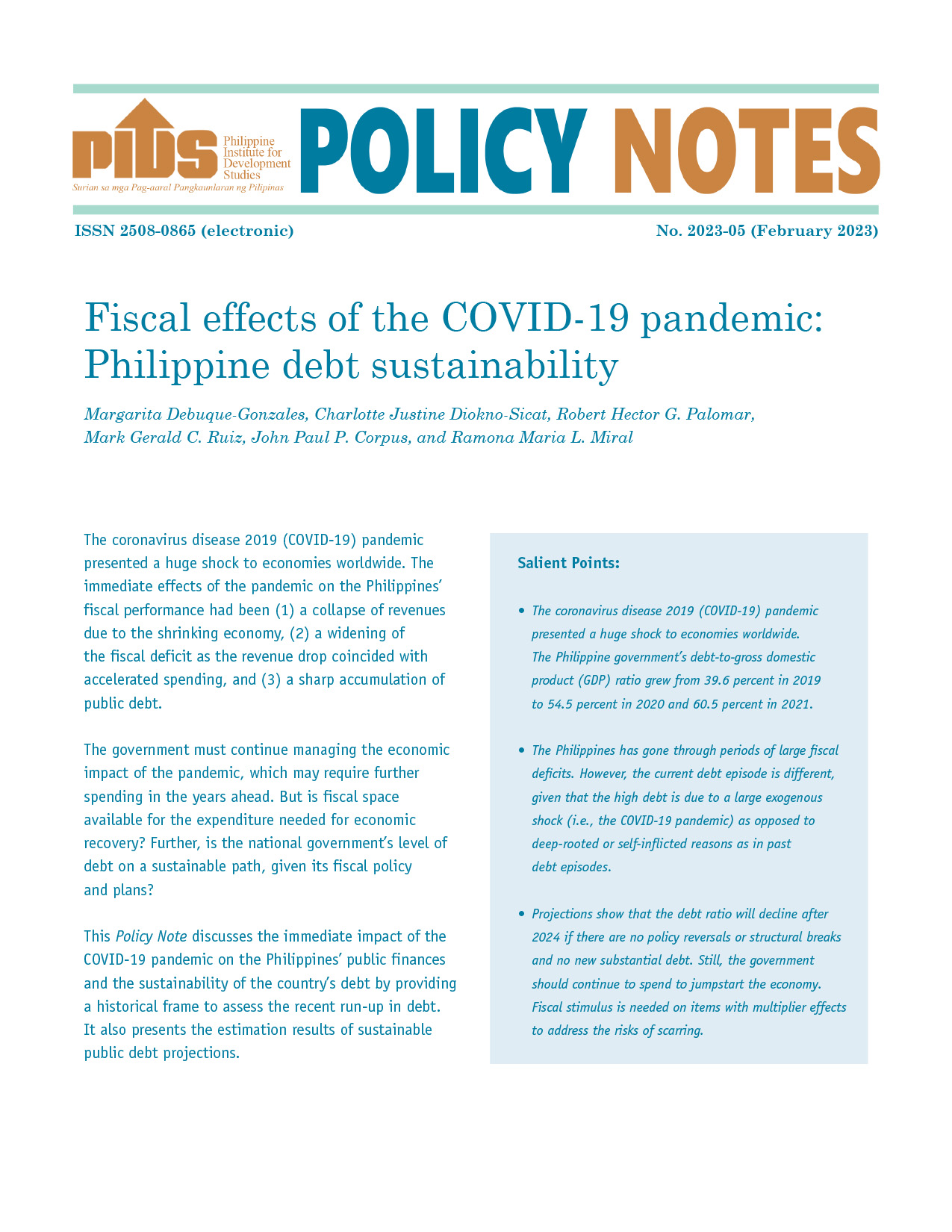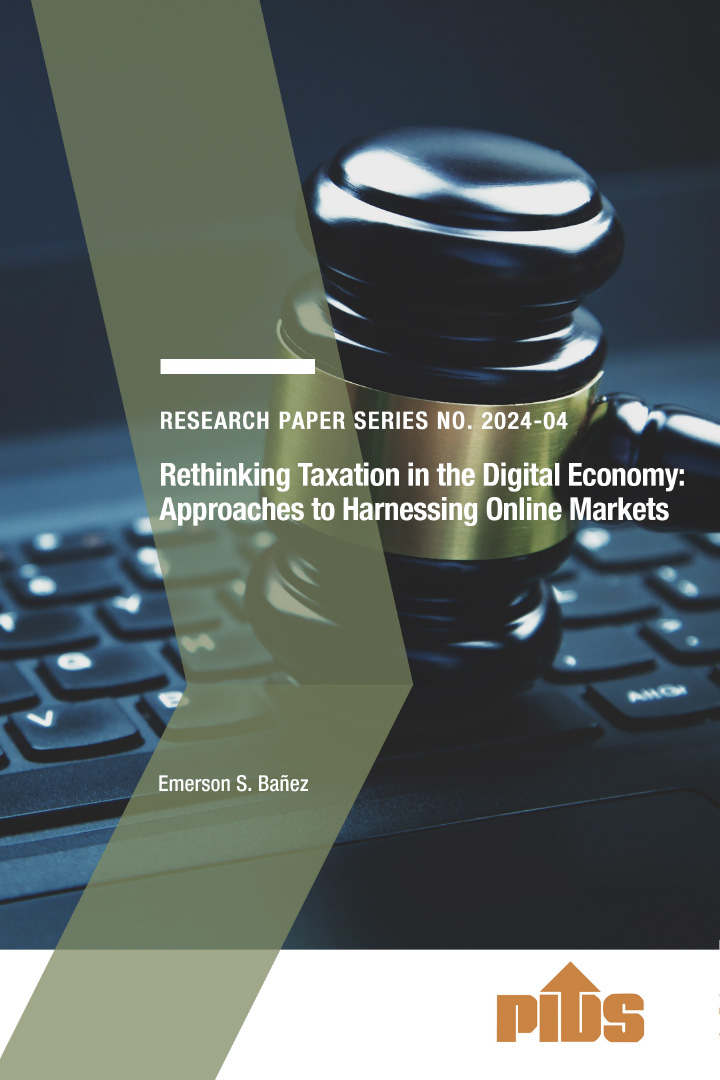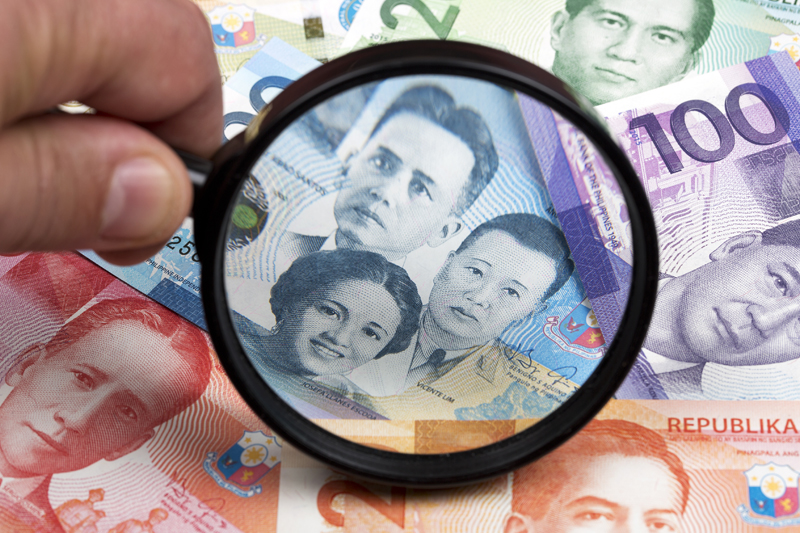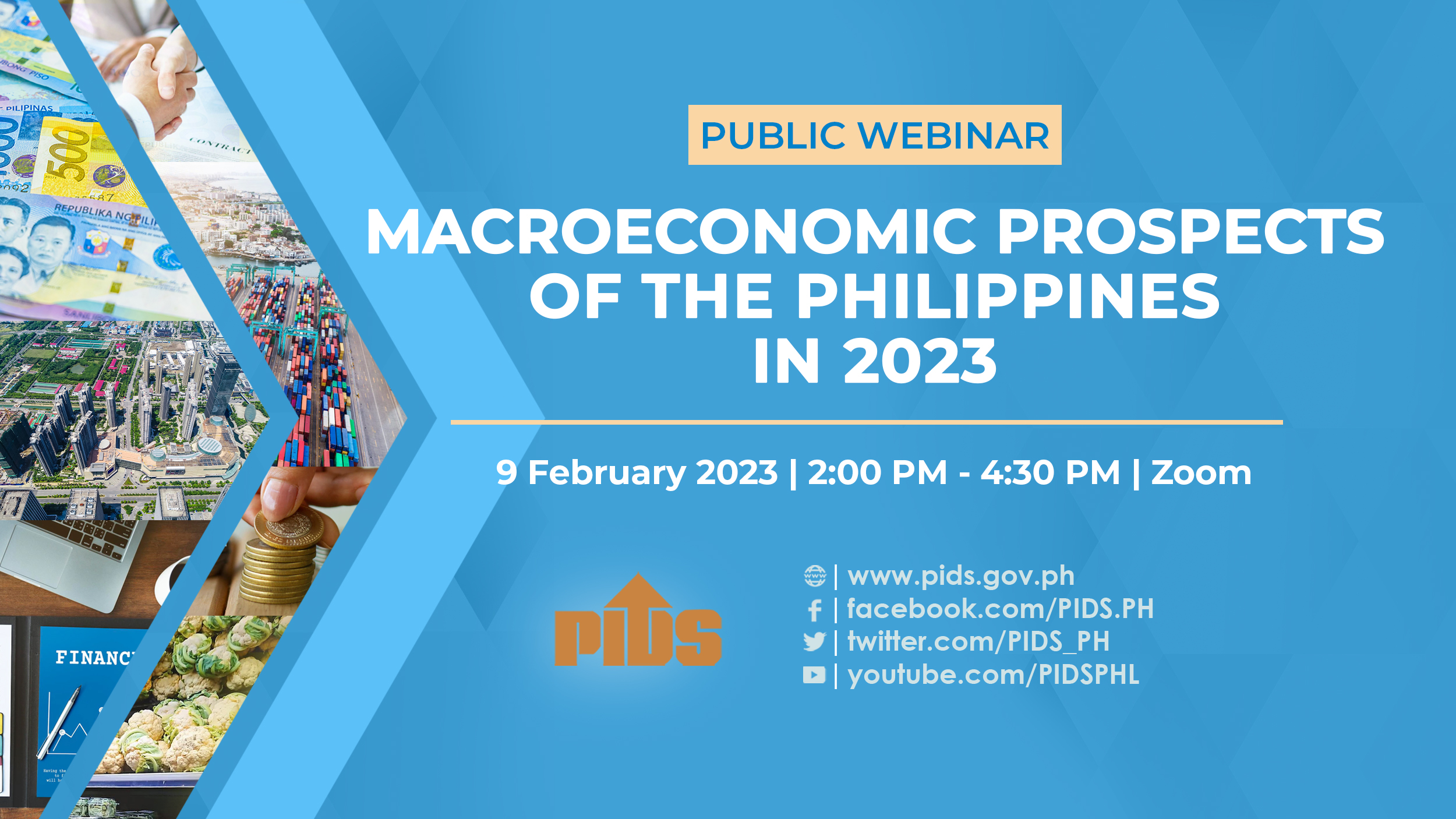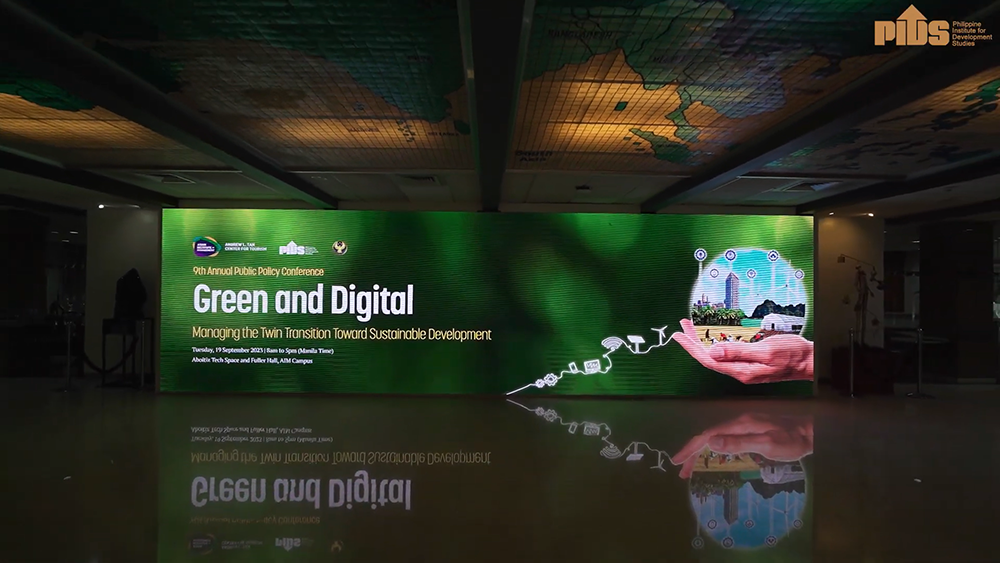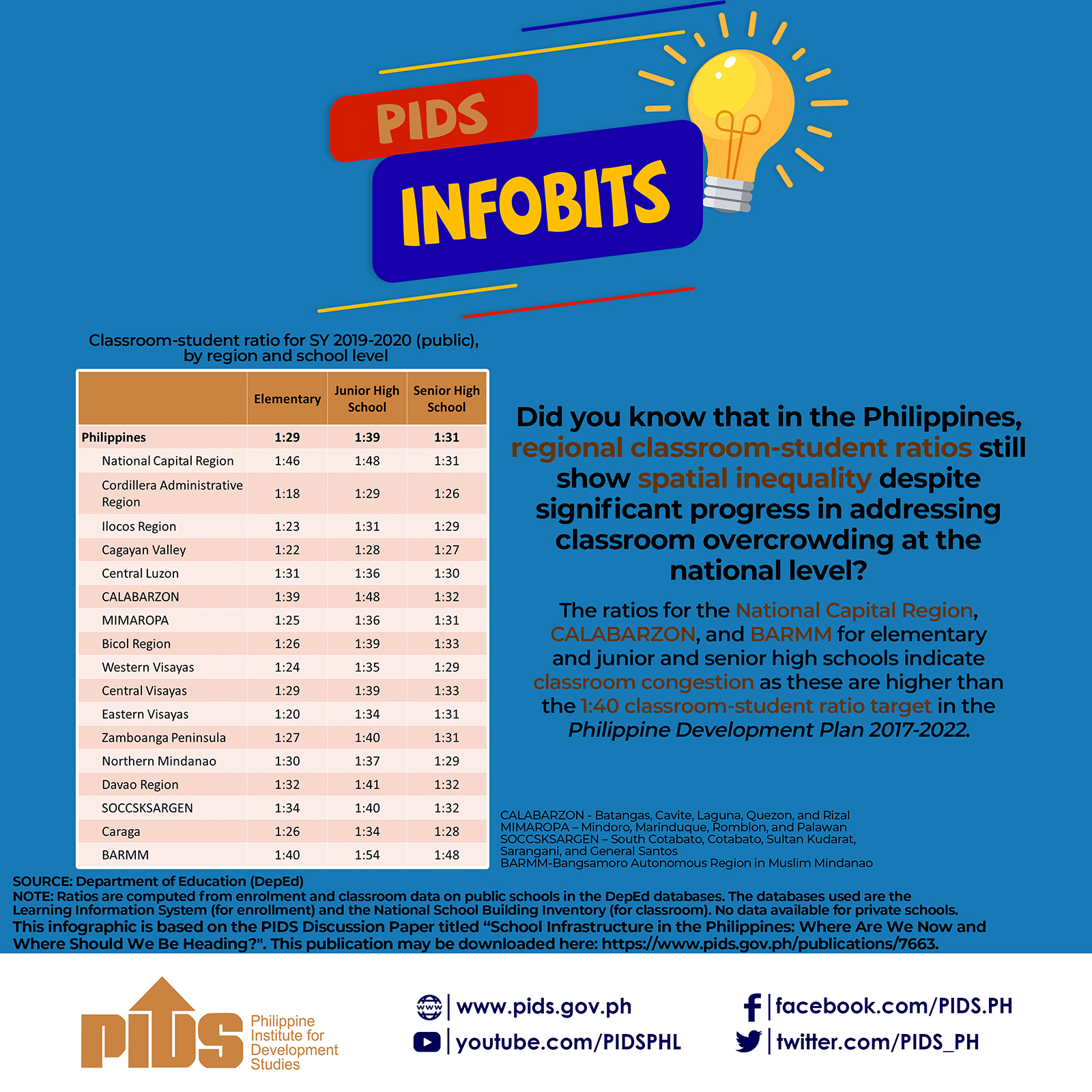THE debt-to-gross domestic product (GDP) ratio is expected to peak at a “manageable” 66.8% in 2023, but is unlikely to return to pre-pandemic levels in the near term, the Philippine Institute for Development Studies (PIDS) said in a report on Thursday.
At the end of the first quarter, the debt-to-GDP ratio was 63.5%, exceeding the 60% threshold that multilateral lenders consider suitable for developing economies.
The ratio was 39.6% in 2019, but grew significantly as the government was forced to borrow in order to finance its pandemic spending.
The projection for 2025 is 66.4%.
“The debt increase resulted from a widening fiscal deficit triggered by a steep collapse in government revenue and a rise in public spending to support the country’s public health system and provide relief response to the pandemic,” PIDS said in its report.
It called the debt surge less of a worry in the absence of interest rate shocks, excessive foreign debt, and a steady decline in tax effort.
“There is also a ‘consensus view’ in the government and private sectors that the fiscal deficit will trend downwards, and interest-growth differentials will remain negative as GDP growth normalizes to pre-pandemic levels by 2022,” it said.
Fiscal adjustments for 10-, 20-, 30-year time horizons would entail either raising more revenue or reducing spending, PIDS said.
“For instance, in the 10-year time horizon computation or by 2031, additional annual increases in the primary balance need to range from 1.4 to 3.4% of GDP, assuming that the government has reduced the primary deficit to its pre-pandemic level of 0.81% of GDP.”
To ensure debt sustainability, PIDS said that fiscal policy reforms should be maintained, while policy governing medium- to long-term fiscal consolidation should be carefully considered.
Additionally, the government should continue investing in infrastructure and human capital throughout the recovery from the pandemic.

